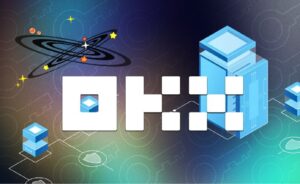Ethash is the algorithm utilized for the proof of work mining Ethereum and ETH-based cryptocurrencies.
What Is Ethash?
How Does It Work?
Ethash is a modified version that eliminates the computational cost that existed in its previous version, Dagger-Hashimoto. The program makes use of a vast dataset that is produced regularly and gradually expands over time. It is small enough to fit in the VRAM of a contemporary GPU.
With Ethash, the hash value produced by the process must be less than a given threshold. This is known as difficulty, and it entails the Ethereum network raising and lowering the threshold to manage the pace at which blocks are mined. If the rate at which blocks are found rises, the network automatically increases the difficulty level, lowering the network threshold so that the number of valid hashes capable of being found lowers as well.
If the pace of discovered blocks falls, the network threshold rises, resulting in a greater number of accurate hash values that can be found.
Ethash defines approximately how much computing resources should be expended by a miner to locate the sequence number (nonce) that permits them to propose a new block to add to the blockchain. The network generates one block every 12 seconds on average.
Miners frequently raise the memory clock frequency on their GPUs to obtain huge gains in Ethash hash rates. To counterbalance the related heat production, power or temperature constraints, as well as manually-set high fan speeds, are occasionally found.
To achieve the most cost-effective mining farms, it’s usual to see custom-built PCs specified with six or more high-end GPUs for mining Ethereum, with little attention on the other components.
A miner that successfully discovers a block that may be added to the blockchain earns the following:
- A static block reward of three ether.
- As part of the proof of work mining procedure, the gas cost is assigned to the miner’s account which is consumed by the execution of all the transactions within a block.
- An additional 2.625 ether is awarded for adding uncles in the block.
To summarize, Ethash is a memory-hard proof of work algorithm that has been intended to be ASIC-resistant in an attempt to make the mining process more equitable. It is also worth noting that there are proposals to change Ethereum’s consensus mechanism from proof of work to proof of stake, which would render Ethereum mining useless in its present form.



